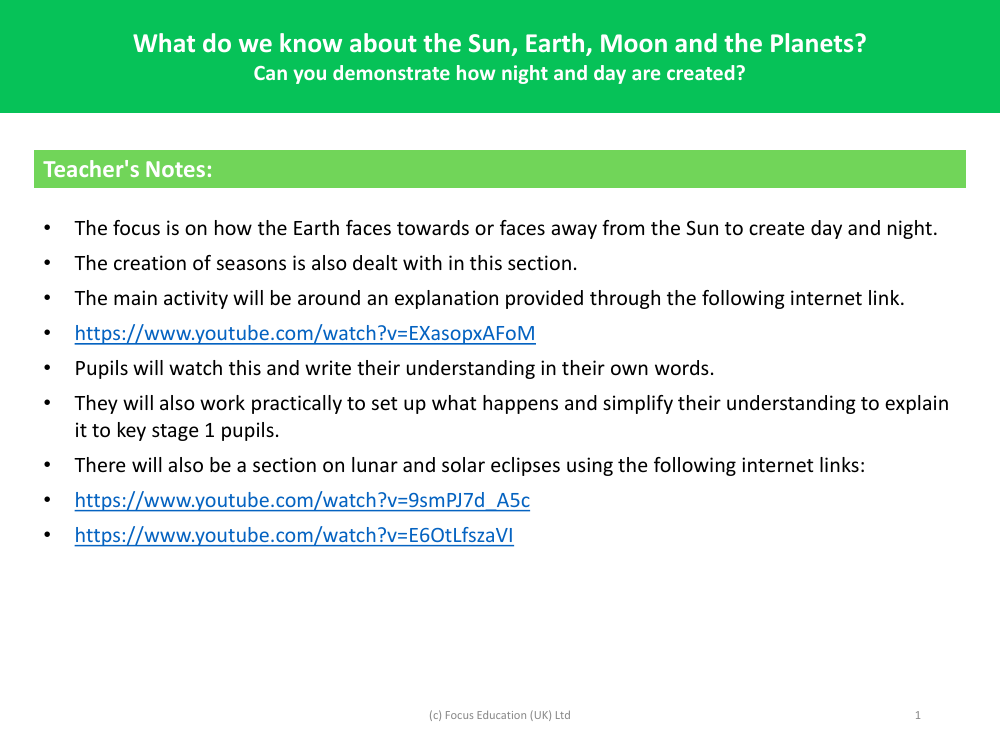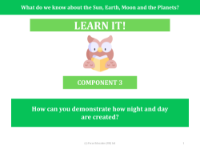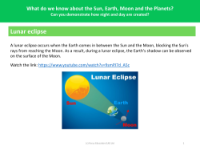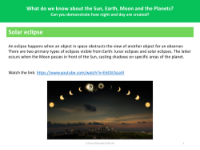How can you demonstrate how night and day are created? - Teacher notes

Science Resource Description
To understand the phenomena of night and day, the Earth's rotation and its position relative to the Sun are key concepts. The Earth spins on its axis, and at any given moment, one half of the planet is bathed in sunlight while the other half is turned away, enveloped in darkness. This rotation is what causes the cycle of day and night. As the Earth turns, the area facing the Sun experiences daylight, while the opposite side experiences night-time. This continuous rotation ensures that, over a 24-hour period, all parts of the Earth experience both daylight and darkness.
In addition to this, the lesson will touch upon the mechanics behind the creation of seasons, which relate to the Earth's tilt and its orbit around the Sun. To help pupils grasp these concepts, they will watch an educational video and then write down their understanding in their own words, encouraging comprehension and retention. Furthermore, pupils will engage in a practical activity where they will set up a demonstration of the Earth's rotation to explain the occurrence of day and night, simplifying the explanation to make it accessible for younger students in key stage 1. The lesson will also cover lunar and solar eclipses, using additional resources to illustrate how these events occur when the Moon passes between the Earth and the Sun, or when the Earth casts its shadow on the Moon.






